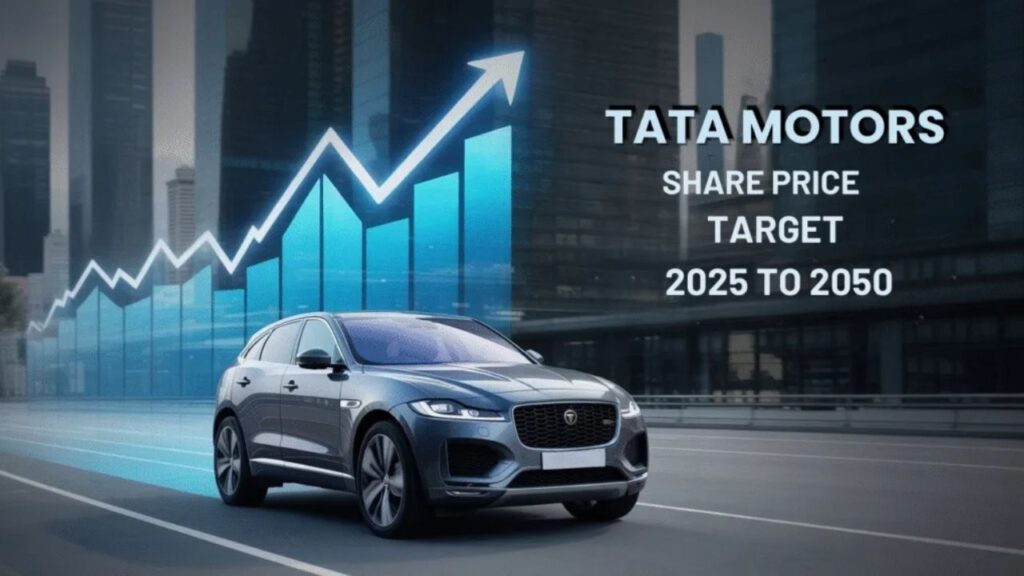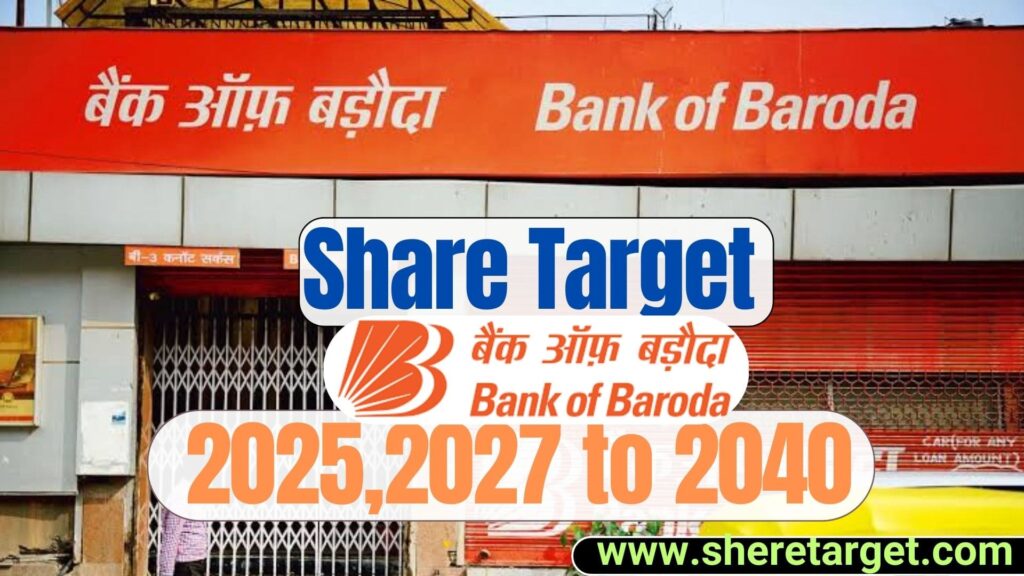Introduction
TML Commercial Vehicles Limited, operating under the brand name Tata Motors Commercial Vehicles, represents a significant segment of India’s automotive industry. As part of the larger Tata Motors ecosystem, this division has played a crucial role in shaping the commercial vehicle landscape across India and international markets. This comprehensive analysis examines the historical performance, current standing, and future prospects of TML commercial vehicles share price, providing investors with actionable insights.
Historical Performance: The Journey So Far
Early Years and Establishment (Pre-2010)
The commercial vehicle division of Tata Motors has been integral to India’s transportation revolution since the company’s inception. In the early 2000s, Tata Motors dominated the commercial vehicle segment with approximately 60% market share in medium and heavy commercial vehicles (M&HCV). During this period, share prices reflected steady growth aligned with India’s economic expansion and infrastructure development.
Growth Phase (2010-2015)
Between 2010 and 2015, Tata Motors’ commercial vehicle segment experienced robust growth. The company’s share price saw significant appreciation during this period, driven by:
- Strong domestic demand fueled by infrastructure projects
- Introduction of new models like the Ultra and Prima series
- Expansion into international markets, particularly Africa and Southeast Asia
- Technological advancements in fuel efficiency and emissions compliance
During peak periods in 2011, Tata Motors stock touched highs around ₹1,300-1,400 levels, reflecting investor confidence in the commercial vehicle segment’s prospects.
Challenging Period (2015-2020)
The period from 2015 to 2020 proved challenging for the commercial vehicle industry. Several factors impacted share price performance:
- Implementation of BS-IV emission norms led to inventory adjustments
- Demonetization in 2016 temporarily disrupted demand
- GST implementation in 2017 caused short-term market volatility
- The axle load norms revision in 2018 reduced vehicle demand
- Economic slowdown in 2019-2020 significantly impacted sales
During this phase, Tata Motors share prices experienced substantial correction, falling to levels around ₹150-200 in early 2020, particularly impacted by the COVID-19 pandemic’s onset.
Recovery and Transformation (2020-2023)
Post-pandemic recovery brought renewed momentum:
- Share prices rebounded from ₹150 levels in March 2020 to ₹600-700 range by late 2021
- Strong pent-up demand following lockdown restrictions
- Government’s infrastructure push under National Infrastructure Pipeline
- BS-VI transition completed successfully
- Digital transformation and connected vehicle technologies
By 2023, Tata Motors had consolidated its position with improved operational efficiency and a leaner cost structure.
Current Market Position (2024-2025)
Recent Performance Metrics
As of late 2024 and early 2025, Tata Motors’ commercial vehicle division demonstrates solid fundamentals:
Market Share: Tata Motors maintains approximately 42-45% market share in M&HCV segment and around 45-48% in Light Commercial Vehicles (LCV), making it the undisputed leader in India’s commercial vehicle space.
Sales Volume: The company has been reporting steady month-on-month growth, with commercial vehicle sales showing resilience despite global economic headwinds.
Financial Health: Recent quarterly results indicate improving EBITDA margins in the commercial vehicle segment, typically ranging between 8-10%, reflecting better operational efficiency and product mix optimization.
Current Share Price Dynamics
Tata Motors’ stock currently trades in a range that reflects both opportunities and challenges. Key factors influencing current valuations include:
- Domestic Demand Indicators: Infrastructure spending, e-commerce growth, and industrial activity directly correlate with commercial vehicle demand
- Commodity Prices: Steel, aluminum, and other raw material costs significantly impact margins
- Interest Rates: Commercial vehicle purchases are often financed, making interest rate cycles crucial
- Regulatory Environment: Emission norms, safety regulations, and taxation policies
Financial Analysis: Key Numbers
Valuation Metrics
Understanding Tata Motors’ commercial vehicle valuation requires examining several metrics:
- Price-to-Earnings (P/E) Ratio: Historically ranges between 10-25x depending on market cycles
- Price-to-Book (P/B) Ratio: Typically trades at 1.5-3x book value
- Debt-to-Equity Ratio: A critical metric given the capital-intensive nature; company has been working to reduce leverage
- Return on Equity (ROE): Target range of 15-20% indicates healthy profitability
Revenue and Profitability Trends
Recent financial years show:
- Revenue Growth: Commercial vehicle segment contributes approximately 35-40% of Tata Motors’ consolidated revenue
- Operating Margins: Improved from 4-5% to 8-10% range over recent years
- Volume Growth: Annual growth rates varying between 5-15% depending on economic cycles
Cash Flow Considerations
Free cash flow generation has improved significantly, with the company focusing on:
- Working capital optimization
- Capital expenditure discipline
- Debt reduction strategies
Future Outlook and Predictions
Short-Term Forecast (2025-2027)
Bullish Scenario: If India maintains 6-7% GDP growth with continued infrastructure investment, commercial vehicle demand could grow 8-12% annually. Under this scenario, share prices could appreciate 15-25% annually, potentially reaching new highs.
Base Case Scenario: Moderate 5-6% GDP growth suggests 6-8% commercial vehicle industry growth. This would support 10-15% annual share price appreciation, reflecting steady fundamentals and improving profitability.
Bearish Scenario: Economic slowdown, global recession spillover, or policy disruptions could limit growth to 2-3%, resulting in flat to modest 5-7% price appreciation.
Medium-Term Outlook (2027-2030)
Several transformative trends will shape the medium-term trajectory:
- Electric Vehicle Transition: Tata Motors has announced significant investments in electric commercial vehicles. The success of electrification could be a major value driver, potentially adding 20-30% premium to valuations.
- Export Growth: Expanding international presence, particularly in emerging markets, could add ₹5,000-7,000 crore in additional revenues by 2030.
- Technology Integration: Autonomous driving features, fleet management solutions, and connected vehicle ecosystems represent high-margin opportunities.
- Alternative Fuels: CNG, LNG, and hydrogen fuel cell vehicles could capture 15-20% market share, with Tata well-positioned to lead this transition.
Long-Term Vision (Beyond 2030)
The long-term outlook hinges on:
- India’s infrastructure development achieving developed nation status
- Successful navigation of the electric vehicle revolution
- Maintaining market leadership amid intensifying competition
- Global expansion bearing fruit in key markets
Analysts project that if these factors align favorably, Tata Motors’ commercial vehicle business could double its valuation by 2033-2035.
Investment Advice and Considerations
For Long-Term Investors
Strengths to Consider:
- Market Leadership: Dominant position with extensive dealer network
- Brand Equity: Tata brand commands trust and loyalty
- Product Portfolio: Comprehensive range across all commercial vehicle segments
- Infrastructure Tailwinds: India’s infrastructure boom provides multi-year visibility
- Transformation Story: Improving margins and operational efficiency
Risk Factors:
- Cyclical Nature: Commercial vehicle industry is highly cyclical
- Leverage Concerns: Debt levels require monitoring
- Competition: Increasing pressure from domestic and international players
- Regulatory Risks: Emission norms and policy changes create uncertainty
- Technology Disruption: EV transition requires significant capital and execution capability
Recommendation: Long-term investors with 5-7 year horizons should consider accumulating on dips, targeting 12-15% CAGR returns. Ideal entry points are during market corrections or quarterly result-driven weakness.
For Medium-Term Traders
Medium-term investors (1-3 years) should:
- Monitor quarterly results closely for volume and margin trends
- Track infrastructure spending announcements and budget allocations
- Watch commodity price cycles for margin impact
- Use technical analysis to identify entry and exit points
- Maintain stop-losses at 15-20% below purchase price
Target Returns: 15-20% annually with higher volatility compared to long-term holding
For Short-Term Traders
Short-term trading (3-12 months) requires:
- Close monitoring of monthly sales data
- Sensitivity to macroeconomic announcements
- Technical chart patterns and momentum indicators
- Quick decision-making and strict risk management
Caution: High volatility and event-driven price movements make short-term trading suitable only for experienced investors with high risk tolerance.
Strategic Considerations
Diversification Benefits
Including Tata Motors commercial vehicles in a portfolio provides:
- Exposure to India’s growth story
- Manufacturing sector representation
- Correlation with infrastructure and industrial cycles
- Hedge against technology-heavy portfolios
Position Sizing
Recommended allocation:
- Conservative Portfolios: 3-5% allocation
- Moderate Portfolios: 5-8% allocation
- Aggressive Portfolios: 8-12% allocation
Monitoring Parameters
Investors should regularly track:
- Monthly sales volumes and market share data
- Quarterly financial results and management commentary
- Debt levels and interest coverage ratios
- Capacity utilization rates
- Order book and dealer inventory levels
- Commodity price movements
- Government infrastructure spending announcements
- Competitive intensity and new product launches
Conclusion
TML Commercial Vehicles represents a compelling investment proposition for those believing in India’s infrastructure-led growth story. The company’s strong market position, improving profitability metrics, and transformation initiatives provide a solid foundation for wealth creation.
However, investors must remain cognizant of the cyclical nature of the business, execution risks in electric vehicle transition, and macroeconomic headwinds. The share price trajectory will ultimately depend on the company’s ability to maintain market leadership while navigating technological disruption and sustaining margin improvements.
Final Verdict: BUY for long-term investors with a 5-7 year horizon, targeting 12-15% CAGR returns. HOLD for existing investors while monitoring quarterly results and industry trends. WAIT for better entry points during market corrections for new positions.
The commercial vehicle story in India is far from over, and Tata Motors, with its century-long legacy and renewed focus, appears well-positioned to capitalize on the opportunities ahead. As always, investors should conduct their own due diligence, consider their risk tolerance, and consult financial advisors before making investment decisions.
Disclaimer: This analysis is for informational purposes only and should not be construed as investment advice. Past performance does not guarantee future results. Investors should conduct thorough research and consult qualified financial advisors before making investment decisions.



